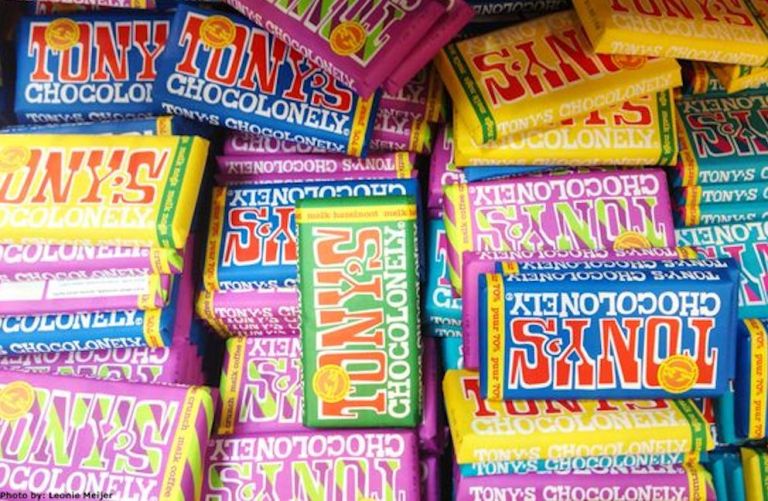
While there are innumerable good things to be said about chocolate, the sour side of the sweet treat is that the “how” of its creation is not anything most people want to contemplate while they are eating it. There are, by most estimates, over 2 million children working in the production side of chocolate, and those children are not volunteers. Conditions on cocoa plantations in West Africa — where some 60 percent of the world’s cocoa supply originates — are akin to slavery, with long hours, little food and brutal treatment.
While this is not universal, in countries like the Ivory Coast and Ghana, there are growing cooperatives and family farms where over 90,000 children and adults, who have been directly sold to a grower, work in a large, industrial-scale, cocoa-growing operation.
Chocolate makers have expressed a desire to buy “clean beans,” particularly as the fair trade movement has become increasing popular over the last two decades, but they do not, in general, buy directly from the producers. Instead, middlemen are inserted throughout the supply chain, which can make it difficult — and in some cases impossible — to know from where one’s product originated, or what the labor conditions there may have been like.
Enter Tony’s Chocolonely. Its founders, who got their start in journalism in The Netherlands (where they are from and where the company is based), have a very different vision of why they are in business and what they are here to do.
“We are a funny company,” says Henk Jan Beltman, chief chocolate officer at Tony’s Chocolonely. “The reason that we are a company is not that we want to sell chocolate and not that we want to make money. We want to make the world a nicer place.” Beltman, before becoming a partial owner of the chocolate business, was Heineken’s chief marketing officer.
While the goal may not have been to make money, they have managed to make some anyway since launching in 2015.
“We hit 1 million euro ($1.1 million) revenue in the first year. This year we aim to hit around $50 million in revenue,” Henk Jan Beltman revealed.
Because, as it turns out, there is a hunger for ethically sourced chocolate out there — a hunger that is hard to satisfy, because of how chocolate is bought, sold and distributed globally. Even though chocolate buyers are willing to pay their procurer extra for ethical, child-labor free products, those procurers, in turn, generally net their supply from a few different sources. That means those “fair trade” beans bought by the candy maker or bulk buyer are somewhat fair trade, somewhat not.
“If you look at certification like the Rainforest Alliance or Fair Trade or UTZ, those are all good, but they don’t manufacture a product … and as a product owner, you feel responsibility and it’s your responsibility to sell something you can be proud of. Whether it’s fish or phones or chocolate bars, it’s always the owner who is responsible for the stuff that they sell … and a certification body is never going to take that responsibility away.”
To make their concept work — and to provide the “pure” chocolate they wanted — the firm had to rethink nearly everything about how traditional supply and production works.
As a result, the firm deals directly with independent in-country farming cooperatives, which sometimes receive non-governmental organization (NGO) support. All participants not only share practices to grow better crops, but also agree to be monitored to make sure they are not trafficking victims or children to work on their product.
In the beginning, the firm worked with 2,800 farmers from five cooperatives in 2016 — three in the Ivory Coast and two in Ghana — to pull in around 2,000 metric tons of cocoa beans.
Once those beans are grown, co-ops deliver their harvests to one central trader, Cocoasource, which transports them in bulk to one of the industry’s largest chocolate makers, Barry Callebaut, in Belgium.
Barry Callebaut processes the chocolate in a dedicated part of their facility to ensure nothing gets mixed up and then sends it to two pouring and molding operations — the company’s contracted chocolatiers — to shape and package the finished product.
In it’s home market, Holland, chocolate is 20 percent of the market.
Here in the states, you can find Tony’s Chocolonely bars at retail stores like World Market and REI, regionally at Whole Foods within the Midwest, Southwest and Pacific Northwest and in a growing patchwork of other grocery stores.
While the firm is focused on growth, according to its founder, the chocolate maker is also interested in changing the rest of the chocolate industry as well, even if it means removing Tony’s most distinctive selling feature: its slave labor-free product.
“We want to show them that if it works for us … it can work for you,” he said about encouraging others in the chocolate business to be more proactive. “If you do it right, there’s a real dignity in the product that you make.”